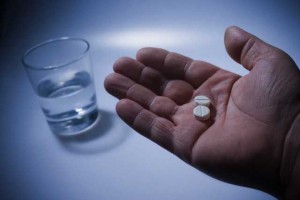While attending the 21st Annual World Congress on Anti-Aging, Regenerative & Aesthetic Medicine the audience was treated to a magnificent speech by the keynote speaker, who you all know from the TV show “The Doctors”, namely the ER-doctor, Dr. Travis Stork.
He said that there are 4 main ingredients that are necessary to live the “best of your life”.
1. Healthy living starts in the kitchen
You want to make sure that you leave out unhealthy foods. This includes that you also need to cut out sugar. Be aware how important protein is, so you need protein with each meal. This includes legumes, fish, chicken, turkey meat and others. Saturated fat is essential, can improve your health and makes you feel full, but stay away from unhealthy, sugary snacks.
Snacks do not harm your health, but they must be healthy ones like nuts three times per day. To include nuts three times per day lowers your risk of dying by 39% and your rate of heart attacks by 52%.
In order to prove a point about cutting out junk foods, the TV producer convinced Dr. Stork to go on a junk food diet for 7 days to see what would happen. He gained 8 pounds after 6 days, his mood was getting subdued and he started to look forward to his next meal as if he was addicted to the junk foods. But suddenly he could not take it anymore and was concerned about getting sick from this experiment (rightfully so). He told his producer that he had to stop this experiment. He explained that most of his fat accumulation was happening in the abdominal area (visceral fat) and he showed a video that illustrated this further. He explained that the visceral fat is metabolically very active, produces inflammatory agents and causes changes in the heart vessels that eventually lead to heart attacks and strokes.
2. “I need you to start working out!”
We were designed to get moving. Our ancestors were gatherers and hunters, so they were constantly on the move. Our genetics have not changed, but our lifestyle habits are far removed: the sessile habits are not suiting us well healthwise. Translated into modern life this means: sit less; do gardening; use pacing as a technique to move when you are on the phone. Take the stairs instead of the elevator; walk (a minimum of 30 minutes three times per week). Personally, I like to add that our body never takes a holiday, so I think we should exercise 7 days per week.
3. Mind and body are connected
Stress can ruin your health. Happy people are 50% less likely to die prematurely. Laughter heals. A funny video was shared with the audience where a parent ripped a piece of paper into smaller and smaller pieces and the toddler watched with glee and laughed every time when the paper was ripped into two smaller parts. A service dog can be a great companion for disabled individuals, but pets have a positive impact on the health of any individual. They can be of help to reduce stress.
It is known that mind and body are connected. As a result, if your mind and body are balanced, your hormones get balanced and this helps to keep your metabolism in check. If your metabolism is balanced, you will avoid getting diseases like heart attacks, strokes, arthritis, and even cancer.
4. Make sure you get enough sleep
40% of people do not get enough sleep. You can change your sleep behavior. How do you do it?
a) Have a consistent bedtime/waking time. Set your alarm clock to the same time every morning. Aim for 7 to 8 hours of sleep per night.
b) Avoid late night caffeine as it prevents a good night’s sleep.
c) Get active throughout the day; this will prepare you to get tired in the evening.
d) Towards the end of the day have a to-do-list ready for the next day. This prevents tossing and turning and thinking about what you want to do the following day. You know that it is all written down on the list, so you can relax and get to sleep.
e) No bright lights in the bedroom, no bright alarm clocks, no control lights of electronic gadgets and have light-blocking window coverings in place. Do not have a TV in the bedroom, also no cell phone, and stay away from the computer for 1 hour before your bedtime.
After you re-programmed your body and mind to a regular sleep rhythm, you automatically get tired when you should and your hormones and body chemistry find a new balance, which contributes to good health.
Dr. Stork stated that we all need to prevent disease. We do this by making health our hobby. There is no need to be obsessed about it. “Just live your best life!”
Conclusion
I summarized Dr. Stork’s presentation from the anti-aging conference, as it struck me how simple it really is to live a healthier life. If we all follow these simple steps, we are a long way into anti-aging, because it gives us the footing we need to further refine it from there.
In many previous blogs I have mentioned these 4 factors that are needed to slow down aging. However, there are other factors that may be needed like bioidentical hormone replacement when there are hormone deficiencies; detoxification, if there is evidence of toxicity; and vitamins and other supplements. Anti-inflammatory and antioxidant vitamins and supplements like CoQ10, vitamin D3 and omega3-fatty acid/DHA supplements are needed to keep LDL from getting oxidized as this is the reason why people die of heart attacks and strokes and get cancer.
I have recently written a book entitled “A Survivor’s Guide To Successful Aging” (being published at Amazon.com in March 2014), which explains the science behind why it is important to cut out sugar and starch. Sugar and starchy foods are the foods that oxidize LDL cholesterol, and ultimately it is the oxidized LDL cholesterol that causes deaths from heart attacks and strokes. In this text I have explained how proper nutrition, exercise, hormone rebalancing, supplements and lifestyle changes will allow you to prevent the major illnesses from setting in thus extending your life expectancy considerably. Included in the book is a chapter (written by my wife, Christina Schilling) that contains 7 days of recipes for breakfasts, lunches, dinners and desserts as well as snacks.
Last edited Oct. 25, 2014















